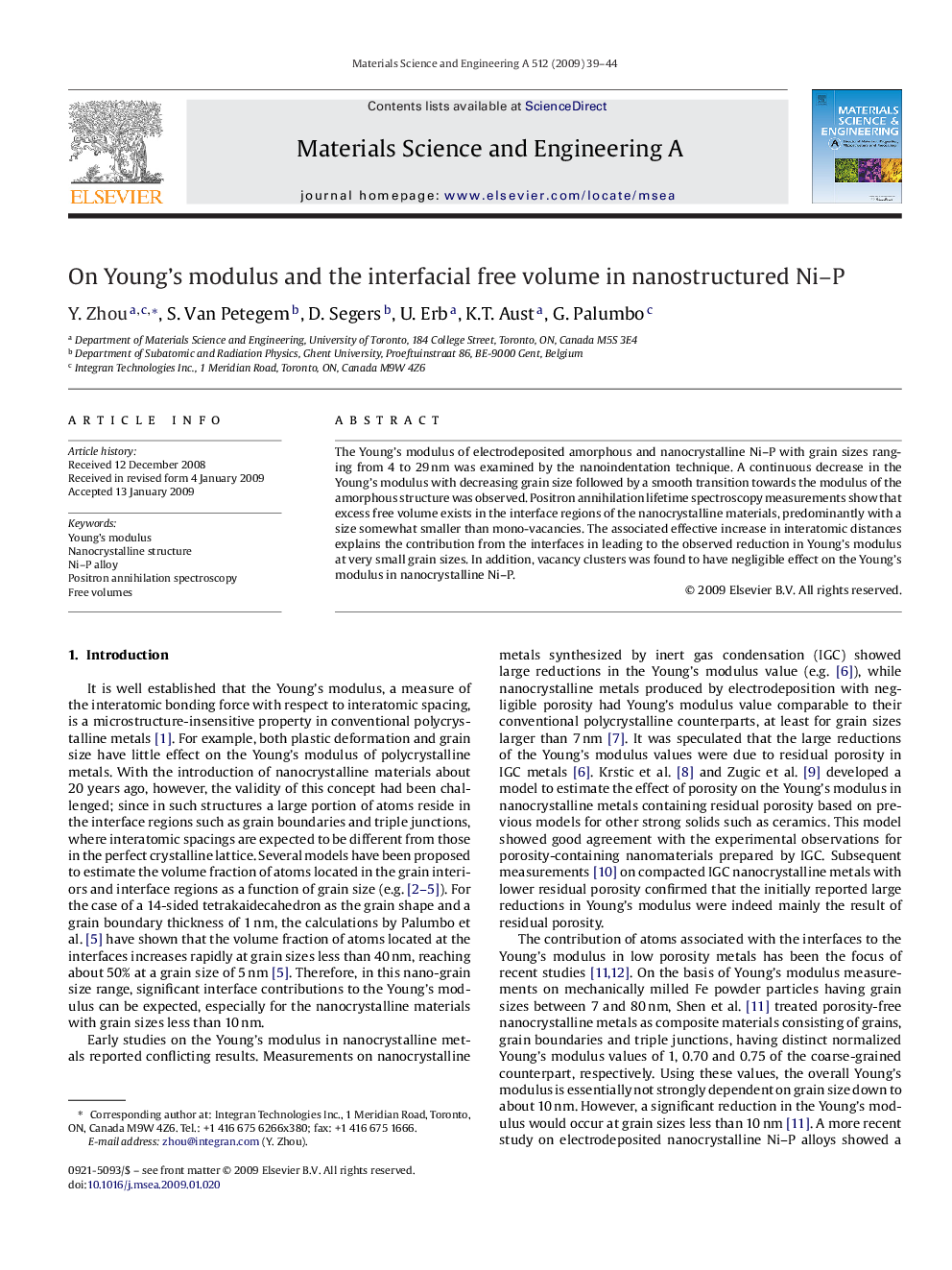| Article ID | Journal | Published Year | Pages | File Type |
|---|---|---|---|---|
| 1580922 | Materials Science and Engineering: A | 2009 | 6 Pages |
The Young's modulus of electrodeposited amorphous and nanocrystalline Ni–P with grain sizes ranging from 4 to 29 nm was examined by the nanoindentation technique. A continuous decrease in the Young's modulus with decreasing grain size followed by a smooth transition towards the modulus of the amorphous structure was observed. Positron annihilation lifetime spectroscopy measurements show that excess free volume exists in the interface regions of the nanocrystalline materials, predominantly with a size somewhat smaller than mono-vacancies. The associated effective increase in interatomic distances explains the contribution from the interfaces in leading to the observed reduction in Young's modulus at very small grain sizes. In addition, vacancy clusters was found to have negligible effect on the Young's modulus in nanocrystalline Ni–P.
